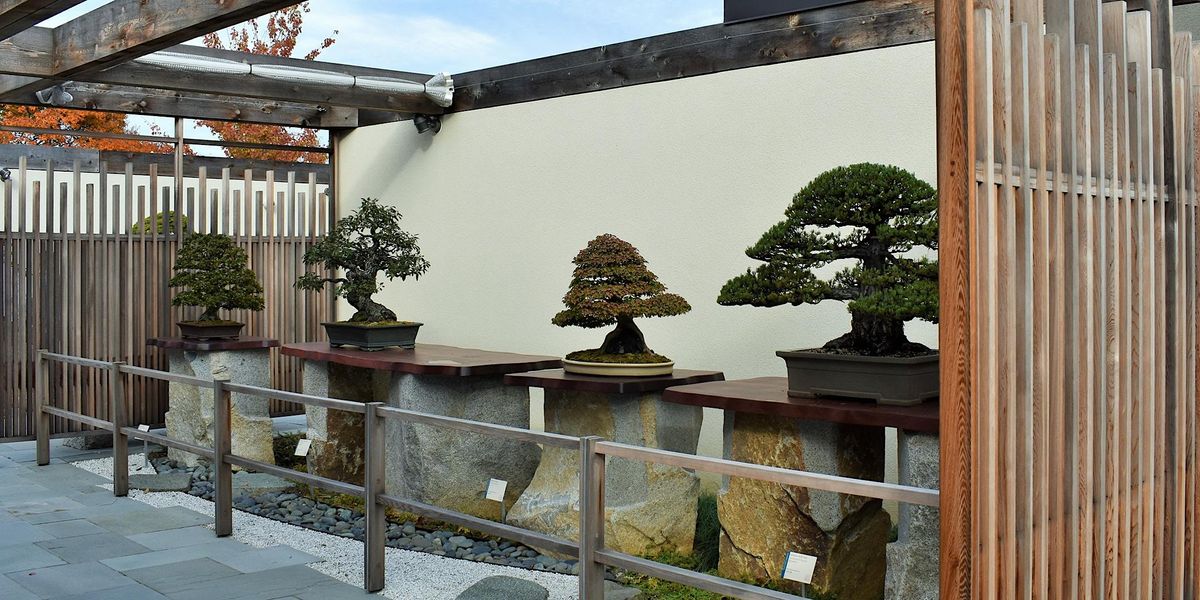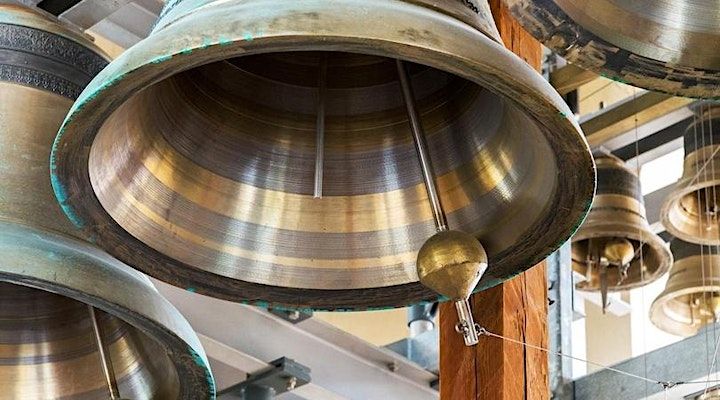
About this Event
The historic bell, a gift from the National Bell Festival, will be dedicated and installed in a new structure along the central courtyard of the three pavilions and special exhibits gallery that comprise the National Bonsai & Penjing Museum. The event will feature a traditional Zen Buddhist blessing and a ceremonial ringing of the bell. Speakers will include:
- Richard T. Olsen | Director, U.S. National Arboretum
- Paul Ashe | Director, National Bell Festival
An old bell finds a new home.
The hanshō, or Buddhist temple bell, was cast in the ninth month of Kansei 10 (1798) by Katō Jinemon from Yokokawa, who came from a family of bell makers in the area of present-day Hachiōji, west of the Tokyo metropolitan area. Their foundry was near the Zen monastery and temple Daisen (also called Daisenji in respect), for which the bell was cast. A monk named Myōdō led a fundraising campaign for the bell's casting. It stands 27 inches tall and weighs 80 lbs.
The Daisen monastery no longer exists. It was located in the Amema village in the Tama district of the province of Musashi. As is true of many Edo-period villages, the names of locations have changed, but the location corresponds to Amema, Akiruno City, Tokyo 197-0825. In 1868, the monastery was incorporated with another temple complex named Jōfukuji, which also no longer exists.
The bell is inscribed in classical Japanese across three ikenomachi, or panels, which detail the particulars of its casting. It includes the phrase:
One strike permeates all things. How could it be said the strike is slight, when it is heard without fail?
The National Bell Festival commissioned the design and construction of a new structure to house and protect the bell. Built of cedar by Japanese woodworking specialist Peter Wechsler, it is based on the traditional Japanese shōrō, a roofed but wall-less structure that offers cover from the elements but allows the bell's resonance to permeate beyond.
The wooden striker, which is swung to sound the bell, is made of willow oak from one of the oldest and largest trees on the Arboretum grounds, recently felled following storm damage.

What is a hanshō?
Hanshō are stationary clapper-less signaling bells hung in Buddhist temples throughout Japan. Like the larger , hanshō are hung mouth-down and remain motionless. A wooden beam or handheld mallet is swung to sound the bell, which indicates the time and calls monks to prayer. In earlier days, hanshō also gave service as fire alarms in village watch towers.
It is said the sloping shoulders and flat base of a hanshō emulate the seated posture of Buddha. As such, the bells are accorded utmost reverence. Casting the temple bell is also a sacred event, with sprigs of hallowed mulberry, gold offerings, and papers containing Buddhist prayers tossed into the molten bronze.
During World War II, an ordinance to collect metals was decreed throughout Japan. To feed its war machine and keep its armies outfitted, Japan needed vast quantities of industrial materials – and like plucking fruit from a tree, they turned to peaceable, defenseless bell towers. An estimated 70,000 bells (approximately 90% of the temple bells then in existence) were destroyed and smelted into armament.
Today, bonshō and hanshō maintain their sacred place in Japanese society and have become internationally-recognized symbols of peace and diplomacy.

About the U.S. National Arboretum
Established in 1927 by an Act of Congress, the U.S. National Arboretum stretches across 451 acres in northeastern Washington, D.C. With a mission to increase the aesthetic, environmental, and economic importance of landscape and ornamental plants, the Arboretum curates picturesque gardens and exhibits, funds long-term botanical research, and leads conservation programs. It is also home to an extensive herbarium, the National Bonsai & Penjing Museum, the National Grove of State Trees, and 22 Corinthian columns which were once part of the east portico of the U.S. Capitol.

About the National Bell Festival
This event forms part of the annual National Bell Festival. The National Bell Festival rings in the New Year with community events across the United States and across the world. The organization also works throughout the year to restore bells and bell towers to their former thundering glory.
Learn more and see the complete line-up of free events and experiences at: Bells.org/Events
Notice of Photography
Photography and filming taking place at the National Bell Festival may incidentally capture your image. By accessing our events, guests grant the The National Bell Festival, Inc. permission to utilize their image, appearance, and statements in audio, video, or photographic form without further authorization or compensation.
Event Venue & Nearby Stays
United States National Arboretum, 3501 New York Avenue Northeast, Washington, United States
USD 0.00
